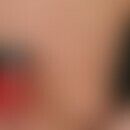Synonym(s)
HistoryThis section has been translated automatically.
DefinitionThis section has been translated automatically.
Rare, chronically recurrent clinical picture with severe angioedema, urticaria and often very high peripheral (primary) eosinophilia (up to > 50,000/ul).
You might also be interested in
EtiopathogenesisThis section has been translated automatically.
Unexplained; proven T-cell defects with an imbalance in the Th2 signaling pathway with increased levels of interleukins 5, 6 and 13 as well as functional disorders of the eosinophil granulocytes. Also occurred after taking ACE inhibitors.
ManifestationThis section has been translated automatically.
ClinicThis section has been translated automatically.
Mostly dramatic, recurrent (monthly intervals; also more often), most severe swelling of the face, neck, extremities and trunk. These episodic angioedema can be combined with high fever attacks, arthralgias, weight loss. The episodes can also occur after infections.
LaboratoryThis section has been translated automatically.
Differential diagnosisThis section has been translated automatically.
Hereditary angioedema
nonepisodic acquired angioedema (without eosinophilia)
nonepisodic angioedema with eosinophilia
TherapyThis section has been translated automatically.
The clinical picture responds well to higher and medium doses of glucocorticoids (e.g. prednisolone 1.0-1.5 mg/kg bw/day).
Isolated success with IVIG has also been described.
Case reports:
- Suplatast tosilate: One case report is available of effects with "Suplatast tosilate" an anti-allergic Th2 cytokine inhibitor.
- Imatinib m esylate: The use of imatinib mesylate (see imatinib below), initially as a steroid-sparing agent and later as a maintenance medication, together with low-dose prednisone resulted in long-term control of hypereosinophilia and all clinical manifestations (Butterfield JH 2021).
Note(s)This section has been translated automatically.
A clinically similar clinical picture is seen with " capillary leak syndrome" when malignant tumors are treated with interleukin-2. There are close relations to the hypereosinophilia syndrome. In isolated cases, episodic eosinophilic angioedema occurred in association with the use of ACE inhibitors (see eosinophilia below). Basso JR et al (2021) described the syndrome together with urticarial vasculitis.
LiteratureThis section has been translated automatically.
- Abouzahir A et al. (2005) Equal syndrome. A case report and review of the literature. Rev Med Intern 26: 137-140
- Banerji A et al (2006) Cytokine-associated angioedema syndromes including episodic angioedema with eosinophilia (Gleich's syndrome). Immunol Allergy Clin North Am 26: 769-81
- Basso JR et al (2021) Episodic angioedema with eosinophilia (Gleich's syndrome) associated with urticarial vasculitis: a coincidence or a novel clinical entity? Braz J Med Biol Res 54:e10745.
- Butterfield JH (2021) Successful Long-Term Control of the Syndrome of Episodic Angioedema With Eosinophilia (Gleich's Syndrome) With Low-Dose Imatinib Mesylate and Prednisone. J Investig Med High Impact Case Rep 2324709620987691.
- Gleich GJ, Schroeter AL, Marcoux JP, Sachs MI, O'Connell EJ, Kohler PF (1984) Episodic angioedema associated with eosinophilia. Trans Assoc Am Physicians. 97: 25-32
- Hashizume H et al (2014) Treatment of non-episodic angioedema associated with eosinophilia with suplatast tosilate, an anti-allergic selective Th2 cytokine inhibitor. Eur J Dermatol 24:250-252
- Motegi S et al (2013) Elevated serum levels of TARC/CCL17, eotaxin-3/CCL26 and vascular endothelial growth factor in a patient with non-episodic angioedema associated with eosinophilia and granulomatous cutaneous reaction. Eur J Dermatol 23:524-526.
- Panaszek B et al (2003) Blood and tissue eosinophilia in patient with angioedema caused by inhibitor of angiotensin converting enzyme (ACE). Pol Arch Med Wewn 110: 1339- 1343.
- Stockner I et al (2008) Non-episodic angioedema associated with eosinophilia following Mycoplasma pneumoniae infection. Clin Rheumatol 27:1573-1576
Incoming links (6)
Capillary leak syndrome; Capillary leak syndrome; Eosinophilia and skin; Facial edema; Hypereosinophilia syndrome; Morbus Morbihan ;Outgoing links (14)
Ace inhibitors; Angioedema acquired; Capillary leak syndrome; Eosinophilia and skin; Granulocyte eosinophile; Hypereosinophilia syndrome; Imatinib; Interleukin-13; Interleukin-2 therapy; Interleukin-5; ... Show allDisclaimer
Please ask your physician for a reliable diagnosis. This website is only meant as a reference.




